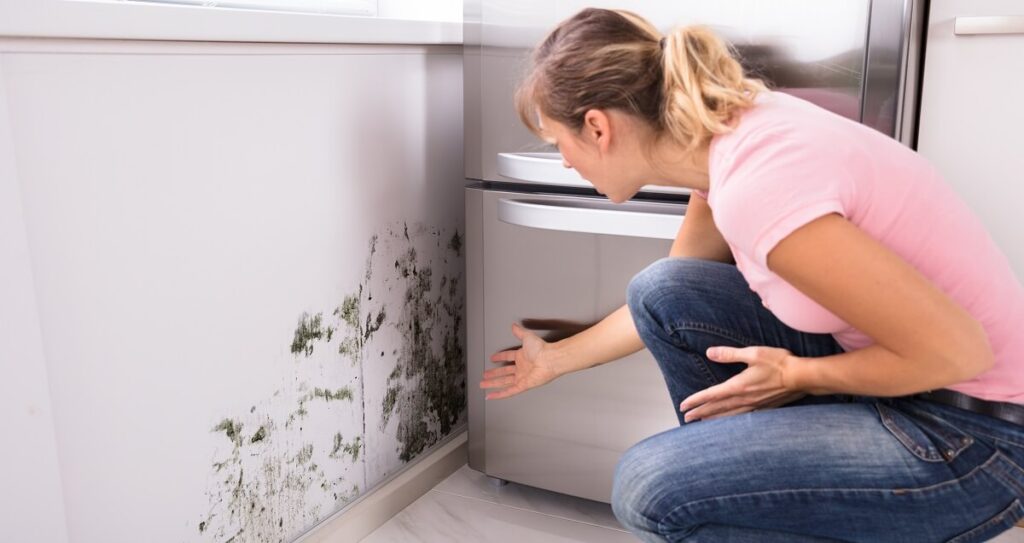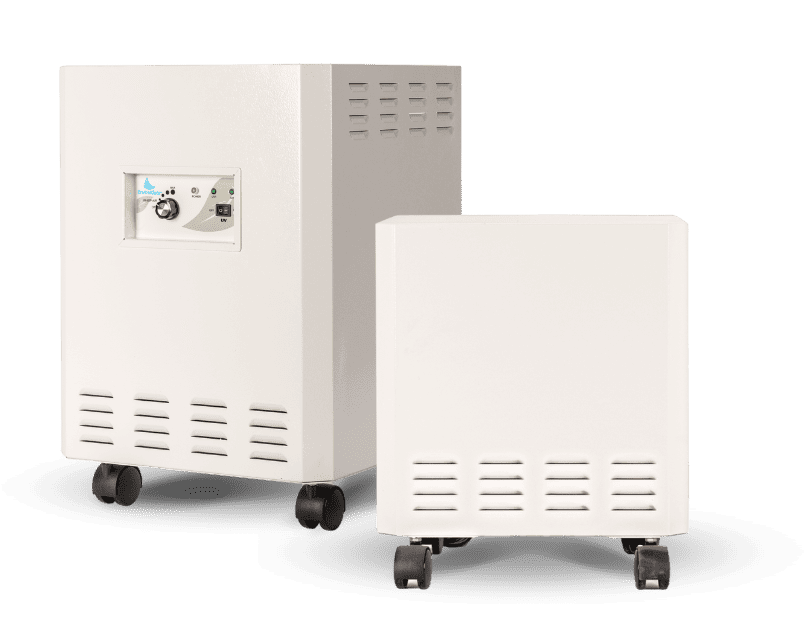Long before you notice any visible signs of mold in your home, the fungus has been living in your walls for several weeks or months. In other words, relying on your sense of sight isn’t the best way to detect mold early.
A better (although imperfect detection method) is to follow your nose!
In most cases, mold smells are a lot quicker to detect than visible signs of fungi contamination. And although mold odor isn’t particularly pleasant, it is a good thing because it alerts you to the presence of fungal growth so that you can prevent further spread and property damage.
But what does mold smell like in walls? You can’t possibly follow your nose if you don’t know what exactly the odor you are trying to identify smells like, right?
Here’s how to know mold odor and the cause of the smell. More importantly, you’ll discover the potential health problems of indoor mold and how to get rid of the unpleasant smell.
What Does Mold Smell Like in Walls?
Smell is subjective, making it a bit tricky to agree on a universal description of how something smells. Besides, some people have anosmia ― they can’t perceive smell.
That said, there’s a broad range of descriptions when it comes to a moldy and musty smell. Depending on who you ask, you’ll get answers like musty odor, earthy, damp, aged cheddar, or rotten mean. Some people even describe it as “having a basement smell.”
None of these answers are wrong since mold doesn’t have a particular odor. According to a journal by Environmental Health Perspectives, there are about 100,000 known mold species! Interestingly, each species have different textures and smells.
But more interestingly, one mold species can produce a wide range of odors depending on its reproduction or growth stage, digestion cycle, moisture source, and the surface where it grows.
Remember this variation in smell when you follow your nose. If you expect mold to smell a particular way, you may miss other odors that signify the presence of fungi and other hidden mold.
What Causes Mold Smell in Walls?
According to the Environmental Protection Agency (EPA), mold release compounds with strong smells into the air. These compounds, known as microbial volatile organic compounds (mVOCs), are released during the fungi’s biological processes. They are responsible for the unpleasant, pungent odor of mold.
Mold smell in your walls indicates mold infestation and should be tackled without delay. You likely have a mold problem if your home smells like an old house ― a problem that can be effectively solved with the tips in this article.

Health Effects of Mold Smell
Regardless of how you describe mold odor, one thing is for sure: if you can smell the fungi, you are likely inhaling mVOCs. If left untreated, mold in walls won’t only cause property damage but also negatively impact the health of those in the mold-infested home.
Although the exact health problems of breathing mVOCs aren’t well known, the symptoms of mold exposure range from mild to life-threatening. You might experience nausea, dizziness, headaches, and fatigue if you inhale the compounds for prolonged periods.
Other symptoms include skin, eye, nasal, and throat irritation, which can cause sneezing, coughing, runny nose, watery eyes, wheezing, itching, and difficulty breathing.
Mold in walls can lead to poor indoor air quality, and repeated or long-term mold exposure can cause more serious allergic reactions.
This is why it is crucial to know how mold grows indoors and to learn effective ways of preventing its growth in your walls or home, as well as learn effective mold removal methods. This is especially true if you or someone in your household has respiratory problems, such as asthma and allergies. Elderly persons, little children, and people with compromised immune are also at high risk of developing mold-related illnesses and health problems.
Whether you are in excellent health, it is usually best to be proactive when it comes to eliminating a mold problem from your home.
How to Know if You Have Mold in Your Walls
An earthy or damp smell in the home usually indicates the presence of mold spores. This is particularly true if opening your windows to let fresh air in doesn’t remove the smell.
Mold-infested walls will appear damp, and you’ll notice mold stains on the wall’s interior in severe cases.
Here’s another clear sign of mold in your walls: the air in your home feels stale, no matter your ventilation efforts. Although the odor might be stronger in some areas, the smell will seem to ooze from all parts of the house.
What Does Mold Smell Like in Walls: Eliminating Mold Odors
Identifying mold smell is one thing; eliminating the foul odor is a different ball game.
Whatever you do, avoid using air fresheners or scented cleaners when trying to remove moldy odor. These are merely temporary solutions ― they mask or cover up the smell for a while but don’t stop mold growth. Besides, many artificial scents contain harmful pollutants that contribute to poor IAQ.
Also, temporarily covering up foul smells with air fresheners doesn’t protect anyone from the harmful effects of mold spores.
Moisture control is an important component in preventing mold growth in your walls. This usually means ensuring adequate ventilation and keeping your HVAC system in tip-top shape. Make sure that the home’s mold-prone areas (those with excessive moisture), like the bathroom, kitchen, laundry room, or basement, are well ventilated.
In addition to promoting air circulation and regular building maintenance, address a water leak and damages as quickly as possible. Also, consider installing dehumidifiers and air purifiers to ensure your home environment has clean air.
The EnviroKlenz Air System is a top choice for many homeowners when it comes to a high-quality air purifier with impeccable filtration and odor-control system. Besides capturing and neutralizing airborne contaminants (such as mold) in indoor environments, the air purifier is designed to improve ventilation in homes.
Lastly, remember that tackling mold can be a tricky business. Consider getting in touch with a mold remediation professional, especially when dealing with large colonies.
EnviroKlenz® Medical Disclaimer:
“Any information that is provided on this website is not for the use by any commercial or personal entity without expressed written consent of the blog author. The material and statements illustrated within this blog are not intended to diagnose, treat, cure, or prevent any diseases or medical conditions. Nor does the author in any way guarantee or validate the validity, totality, or efficacy of any claims and will therefore not be held responsible for the content of any claims. Always consult your medical physician for any specific medical advice or recommendations.”










